RT31 CPCS Blue Card Renewal Mock Test with 106 Questions and Answers / A31 Ride On Roller
£15.00 Original price was: £15.00.£9.95Current price is: £9.95.
Practice Smarter, Not Harder – Mastering the RT31 Ride on Roller Blue Card Renewal Touch Screen Test!
- Questions & Answers: based on the latest RT 31 – Ride On Roller – CPCS Renewal Test Revision FACTSHEET
- Categories: A31 – Ride On Roller
- Number of Multiple-choice Questions: 106
- Format: PDF
- Delivery time: Instant download after checkout
- Refunds: No refunds once downloaded, unless you ordered duplicates by mistake.
If there are any issues with your download, please email CardRenewalTest@gmail.com and we’ll send it ASAP
Master Your CPCS Blue Card Renewal with Our RT31 Ride on Roller Mock Practice Test
Unlock Success with Realistic CPCS Blue Card Renewal Practice
Are you a Ride on Roller operator looking to renew your CPCS blue card and extend your qualification for another five years? The key to success lies in thorough preparation, and we’ve got just the tool to help you ace the renewal test – our RT31 Ride on Roller CPCS Blue Card Renewal Mock Practice Test.
Why You Need Our Mock Practice Test
Stay Updated with the Latest Information: The questions in our practice test are crafted based on the latest NOCN CPCS RT31 Ride on Roller factsheet. We ensure that you’re studying the most relevant and up-to-date material.
Efficient Learning: Skip the lengthy paragraphs and get straight to the point. Our mock test provides you with 106 multiple-choice questions and answers, simulating the real test environment without overwhelming you with information.
Focused Revision: Target specific areas of improvement. Whether you’ve failed the test before or want to reinforce your knowledge, our mock questions cover a range of topics crucial for the CPCS blue card renewal.
Spot-on Question Coverage: Our questions align with the key topics outlined in the CPCS blue card renewal factsheet. From safety procedures to operational guidelines, you’ll be well-versed in every aspect of Ride on Roller operation.
Exam Simulation: Experience the actual test environment with our carefully crafted questions. This simulation will help reduce test anxiety and increase your confidence on the exam day.
How to Pass the CPCS Blue Card Renewal Test
Consistent Practice: Use our mock test regularly to reinforce your understanding and identify weak areas. Consistent practice is the key to mastering the material.
Focus on Weaknesses: The detailed explanations for each question allow you to pinpoint your weaknesses. Concentrate on these areas to ensure a well-rounded understanding.
Review Factsheet Material: While our mock test is comprehensive, it’s essential to review the NOCN CPCS RT31 Ride on Roller factsheet for additional context. Our questions complement the factsheet, providing a well-rounded study experience.
Secure Your Future – Renew Your A31 CPCS Card with Confidence
Book Your Renewal Test: Once you feel confident with our mock test, schedule your CPCS blue card renewal test. The knowledge gained from our practice questions will set you on the path to success.
Extend Your Qualification: A renewed CPCS blue card opens up opportunities and ensures your competence in operating Ride on Rollers. Don’t let an expired card hinder your career – renew with confidence.
Here are a few key points from the RT31 Ride On Roller Factsheet
Preparation and Completing Work (Preparation):
- Ride on rollers in the construction sector usually consist of a ride-on machine with an articulated chassis equipped with smooth drum rollers.
- Types used for earthworks activities may have a forward-mounted drum and pneumatic tires to the rear, capable of working on inclines and rough terrain and can be fitted with a sheepsfoot drum.
- Three-drum rollers are still found in road building and highway maintenance sectors.
- Common incidents with ride-on rollers involve instability, overturning, and striking others.
- The aim of the factsheet is to make operators aware of issues during travel and operation.
Pre-use Checks:
- Pre-use checks conforming to manufacturers’ requirements are crucial to prevent near-misses or injuries caused by deteriorated performance or component failure.
- If a fault or defect is noticed, the operator must report it immediately and seek expert advice, even if considered minor.
Reversing and Safety Measures:
- Reversing of rollers is a significant factor in accidents; rollers are equipped with a reversing warning system.
- The alarm’s correct function and sufficient audibility must be ensured before work starts.
- A safety stop button, cutting the engine and stopping transmission drive, is a common feature and should be checked as part of pre-use checks.
- Rollers should not be parked on soft ground to prevent sinking and potential damage.
Working Safely and with Others:
- Reversing warning systems should be fully functioning to avoid accidents, injuries, and fatalities.
- Guidance recommends eliminating reversing when possible; if necessary, minimize it within a segregated, controlled area.
- Before reversing, the roller driver must ensure no vehicles or personnel are in the path, maintaining all-round vision.
- When interacting with co-workers or supervisors, ensure they are clear of the roller’s operating area before moving off.
- Pedestrian movement areas should be planned to ensure segregation from the roller.
- Planning should consider changes in road or work surface conditions, especially in wet weather.
Transportation and Operational Considerations:
- Rollers, being articulated, should have the articulation bar connected during transportation and removed before driving off.
- One method of compaction is through the roller’s weight acting through the drum onto the ground.
- Good practice recommends switching off the engine when the operator exits the cab or seating area.
- Parking near an occupied trench with the engine running can lead to exhaust fumes entering and potential trench collapse.
- Most ride-on rollers have a hydraulically operated transmission; incorrectly adjusted components can cause unintended forward movement.
Compaction and Vibration:
- A rolling specification is devised, determining amplitude requirements.
- Low amplitude settings are specified for heavier rollers compacting thin layers.
- Before compacting, the area should be checked for voids or soft, weak areas.
- Using vibration close to an unsupported edge can cause rollers to vibrate towards the edge and slide off, leading to overturns.
Stability and Overturning:
- Ride-on rollers are fitted with a roll over protective structure (ROPS), minimizing injuries in case of an overturn, provided the operator wears a seatbelt.
- Operators must keep their limbs within the operating station confines, especially without an enclosed cab.
- Manufacturers indicate the maximum gradient allowed when traveling on inclines to prevent possible instability and overturns.
- Narrow drum rollers are susceptible to sideways overturns, even on gentle inclines, and can become unstable on rough surfaces and soft ground.
- Overturns may occur if operators travel too fast for site conditions; manufacturers’ incline requirements must be followed.
- Traveling near a trench can cause its sides to collapse, potentially overturning the roller and causing damage.
- Manoeuvring a roller up a small ramp requires a safe access area and suitable ramps to prevent accidents.
Proper planning is emphasized throughout to prevent incidents during roller operation and ensure operator safety.
3 reviews for RT31 CPCS Blue Card Renewal Mock Test with 106 Questions and Answers / A31 Ride On Roller
Add a review Cancel reply
Related products
CPCS Blue Card Renewal Tests
RT12 CPCS Blue Card Renewal Mock Test with 130 Questions and Answers / A10, A12 Excavator 180°
CPCS Blue Card Renewal Tests
RT19 CPCS Blue Card Renewal Mock Test with 123 Questions and Answers / A19 Grader
CPCS Blue Card Renewal Tests
RT45 CPCS Blue Card Renewal Mock Test with 110 Questions and Answers / A 45,46,47,48 Piling Rig
CPCS Blue Card Renewal Tests
RT66 CPCS Blue Card Renewal Mock Test with 133 Questions and Answers / A66 Compact Crane
CPCS Blue Card Renewal Tests
RT22 CPCS Blue Card Renewal Mock Test with 144 Questions and Answers / A22 Tracked Loading Shovel
CPCS Blue Card Renewal Tests
RT42 CPCS Blue Card Renewal Mock Test with 117 Questions and Answers / A42 Crusher
CPCS Blue Card Renewal Tests
RT33 CPCS Blue Card Renewal Mock Test with 129 Questions and Answers / A33 Agricultural Tractor
CPCS Blue Card Renewal Tests
RT43 CPCS Blue Card Renewal Mock Test with 102 Questions and Answers / A43 Screener


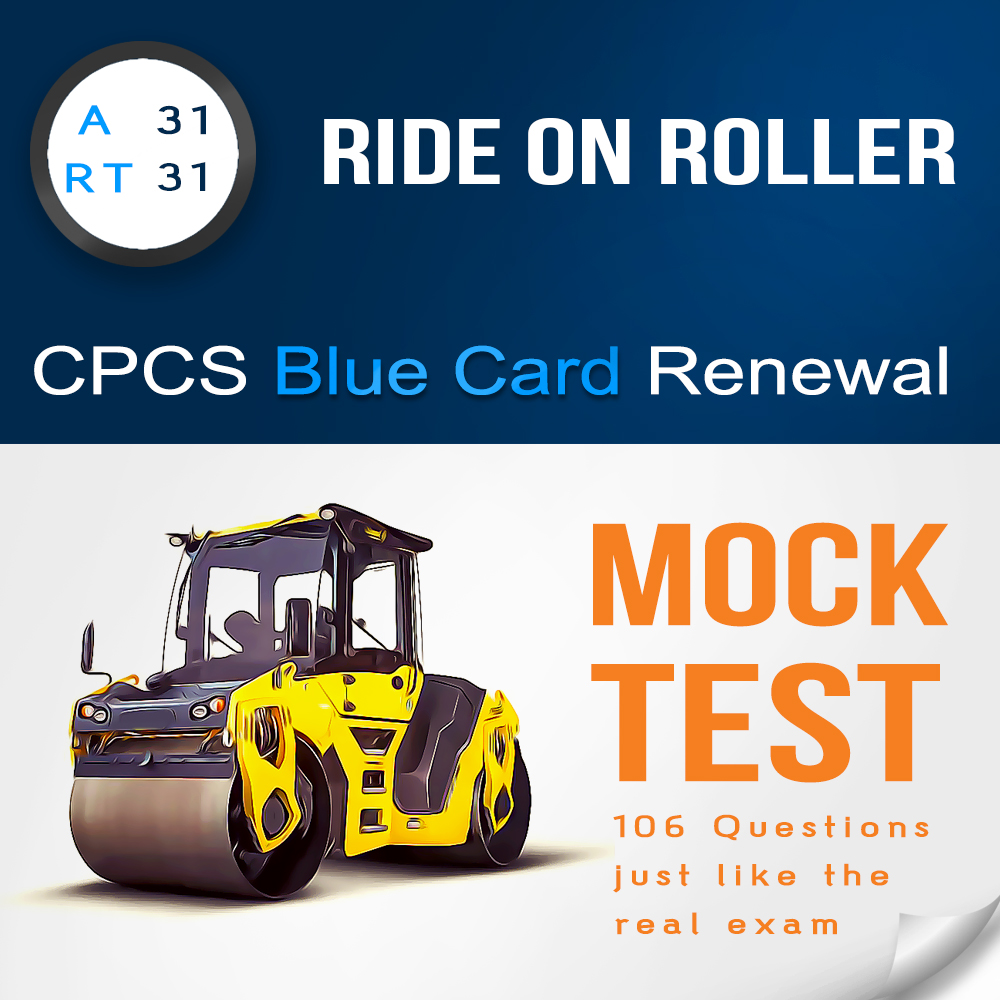


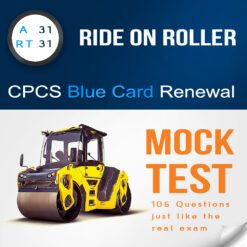

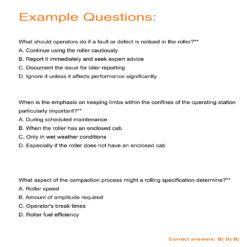


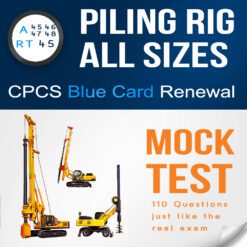

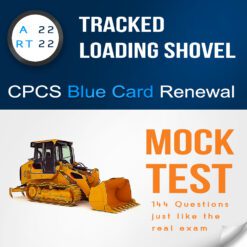

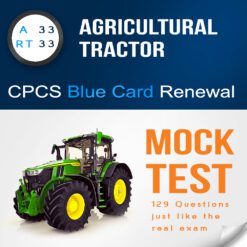


William Turner –
These practice questions for ride on roller are very helpful and easy to read. I feel confident taking the text in 3 weeks.
Thomas Evans –
Good one mate
Raj K –
Read it on my breaks and got ready for my test and passed